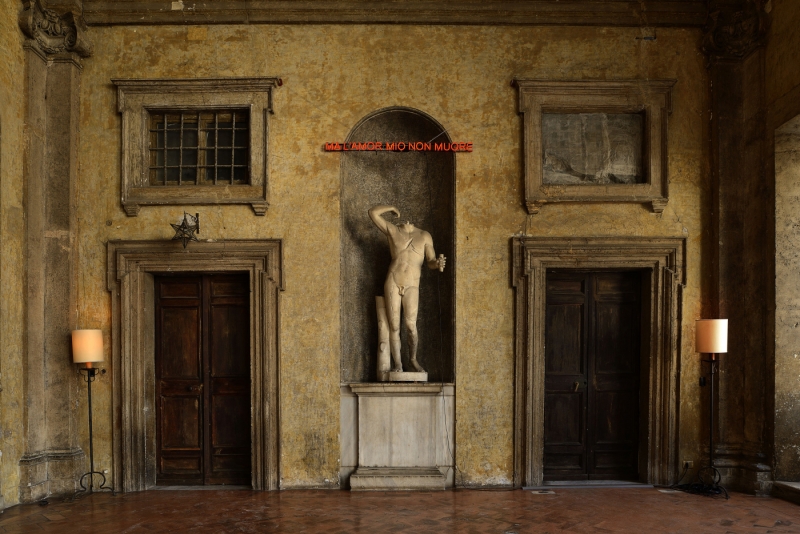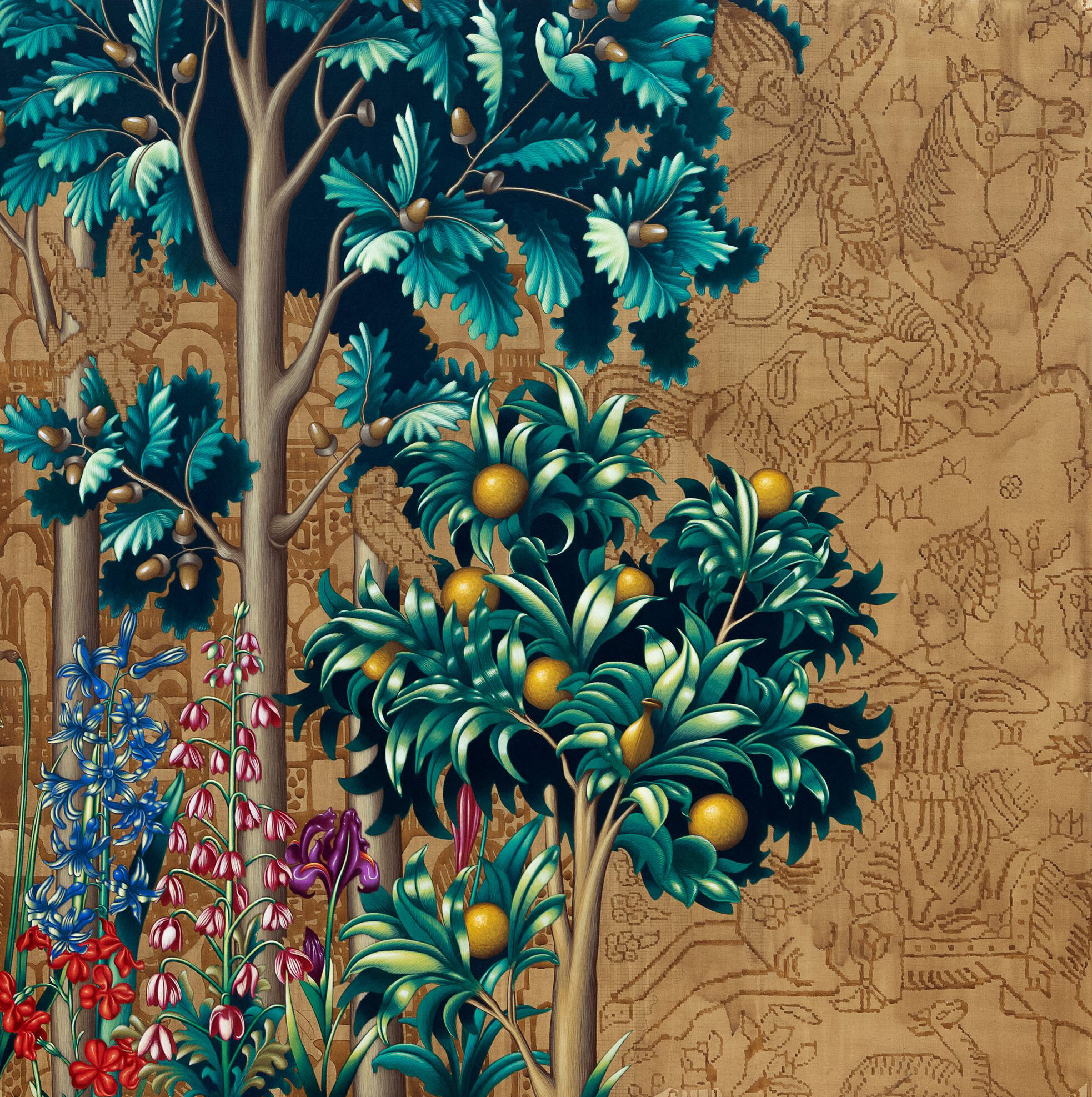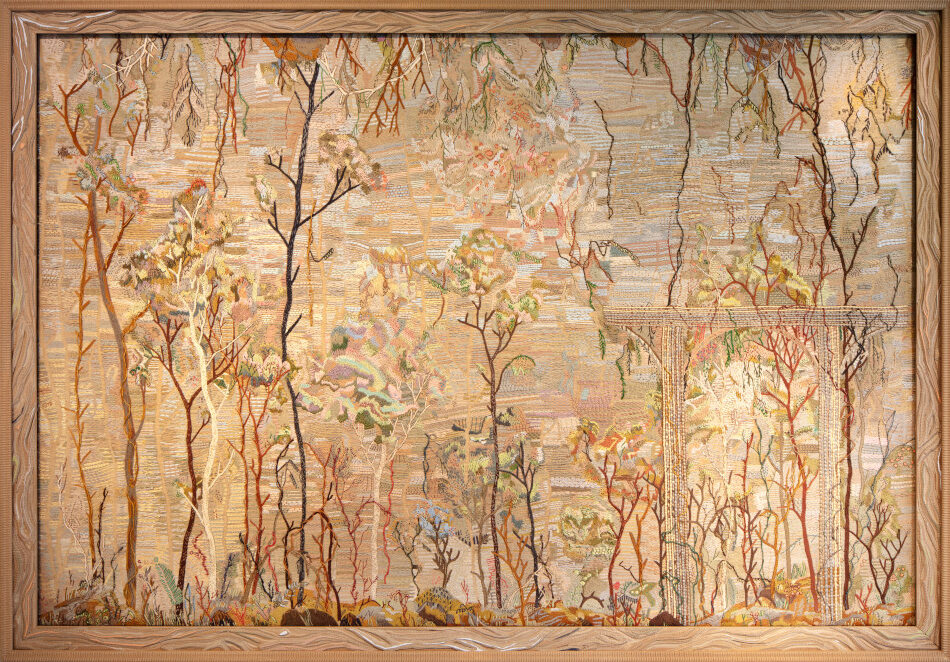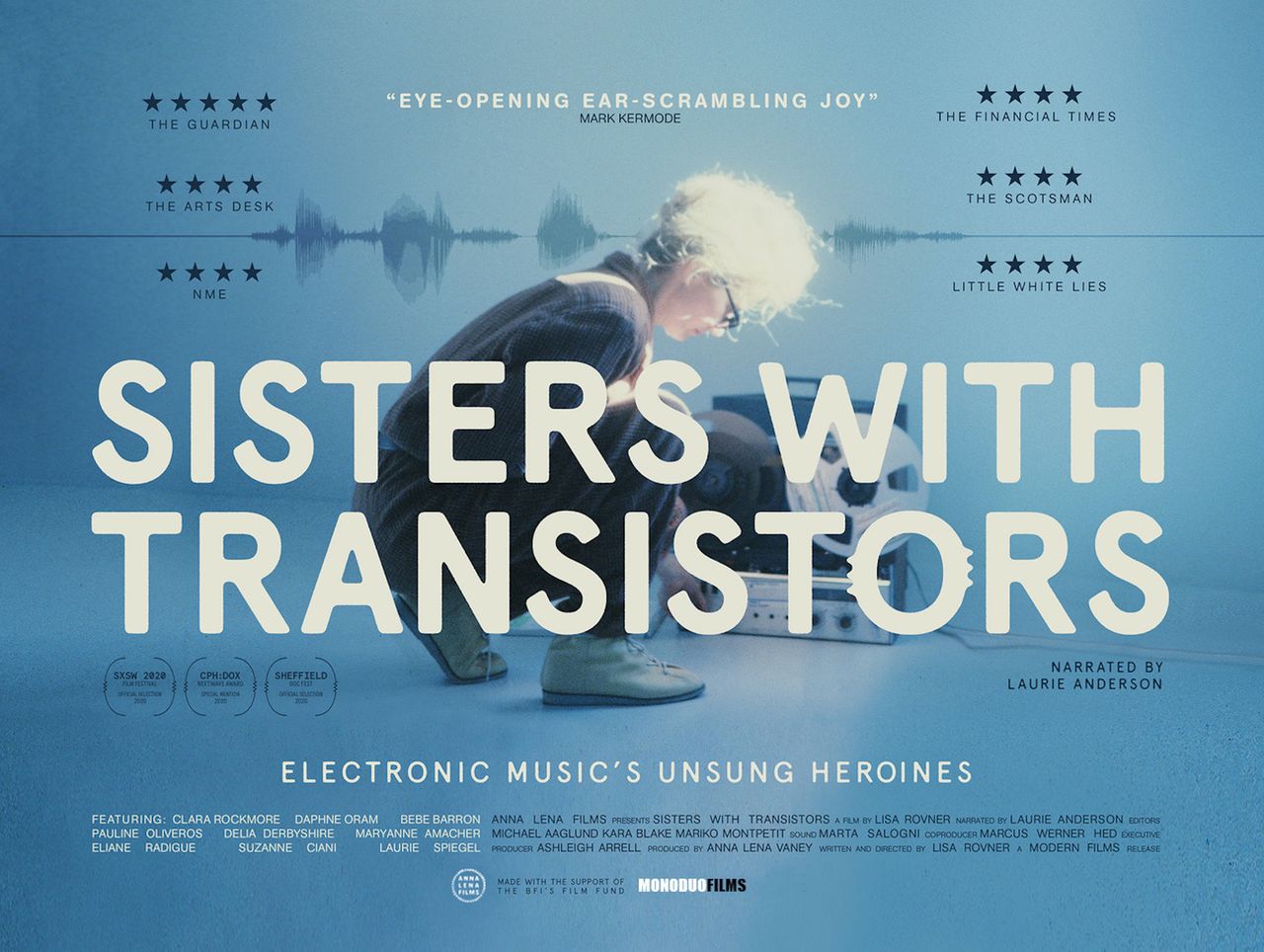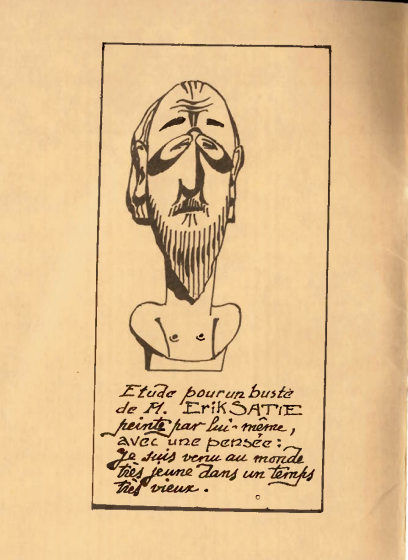Search
Art Club #6 Claire Fontaine
23.06.2016
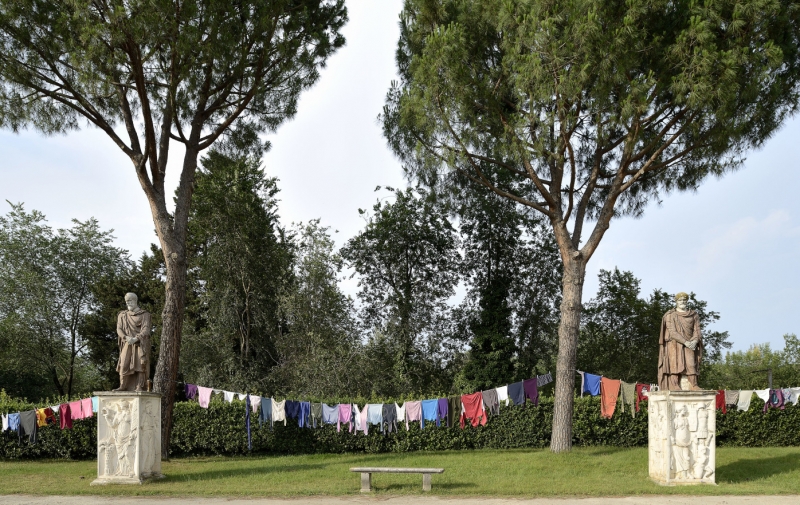
- Artist
- Claire Fontaine
- Curator
- Pier Paolo Pancotto
“The project by Claire Fontaine (collective founded in Paris in 2004; lives and works in Palermo) occupies the garden area opposite the Loggia. The installation (…) features a series of garments hung from wires, and at first glance offers a sense of joy behind which lies the drama of migrants, transforming the gardens into an ideal luxury camp for ‘invisible’ people. The clothes hanging between the trees and the Villa’s architectural structures suggest the absence of the bodies of those who could not even become refugees, and accompany them like a silent shadow as they arrive in the city. The Villa thus becomes a metaphor for a social problem that is always crucial, and which, juxtaposed with its beauty, emerges with particular force. The Loggia is also adorned with the neon sign Ma l’amor mio non muore. As Claire Fontaine asserted in Nous sommes tous des singularités quelconques (2006): “The reasons for a love that doesn’t die often draw on the past more than the present. No doubt because love has no sense of reality, but it does have a sense of the possible, and is akin to the future and the unborn. The fact that we love communism – and still do – means that, for us, the future exists and is not the private property of today’s and tomorrow’s rulers. It means that the love that sustains the passage of time, that makes projects and memories possible, is not possessive, jealous, unshareable, but collective; that it fears neither hatred nor rage, that it does not take refuge unarmed in homes, but runs the streets and opens closed doors”. The neon and the garden installation aim to involve the viewer fully, through a means of visual seduction, trying to touch all his senses, to invite him to reflect, once again, on the relationships between individuals and the ethical codes that underpin them”.
